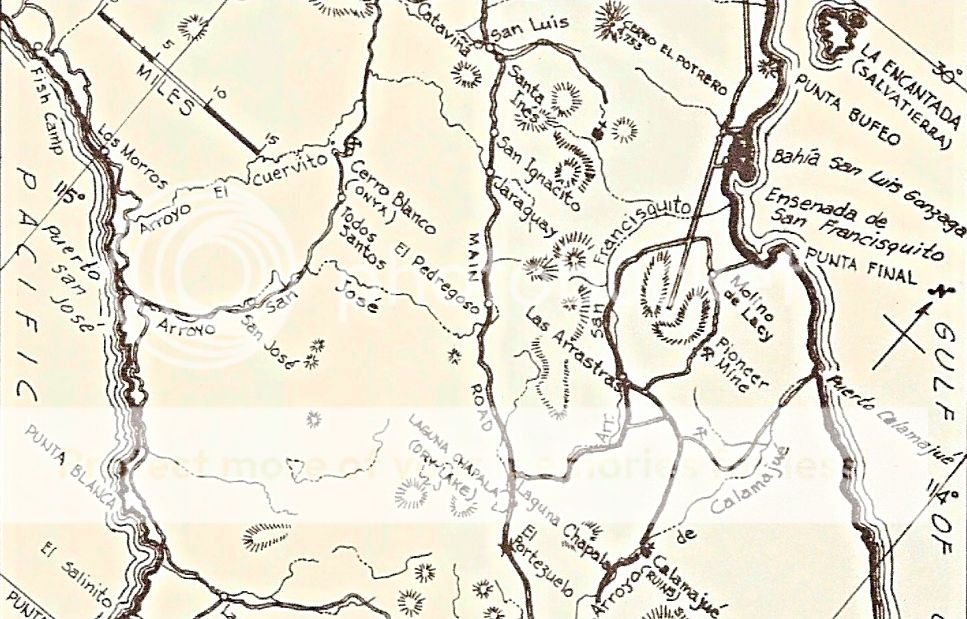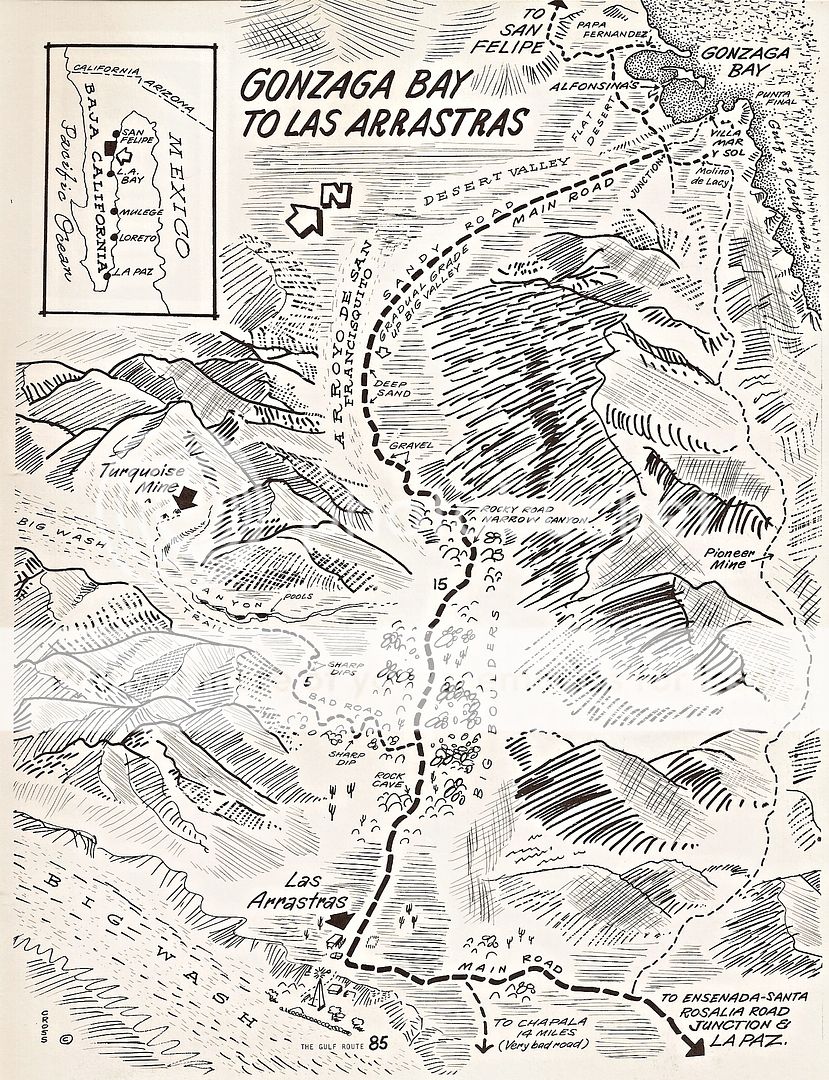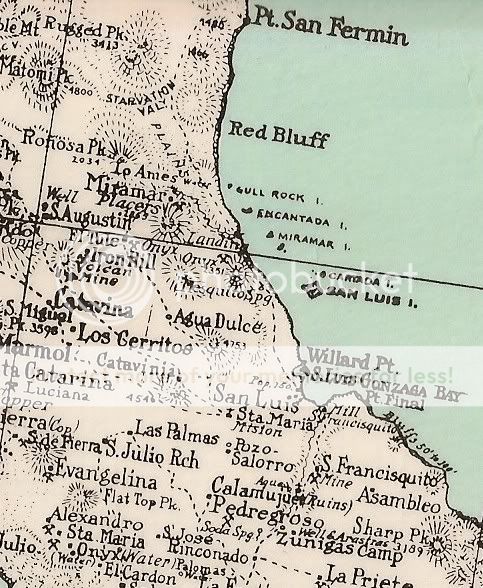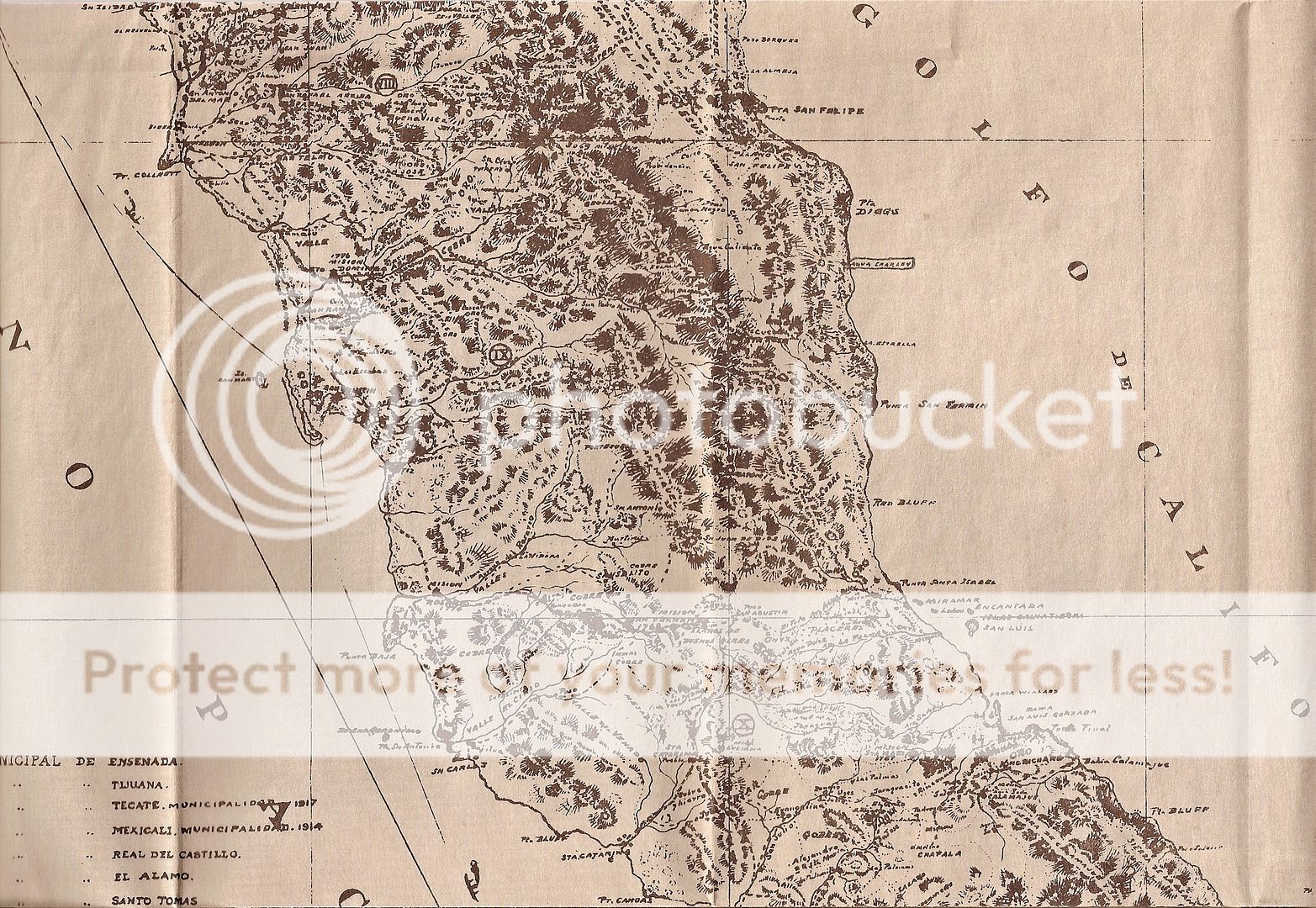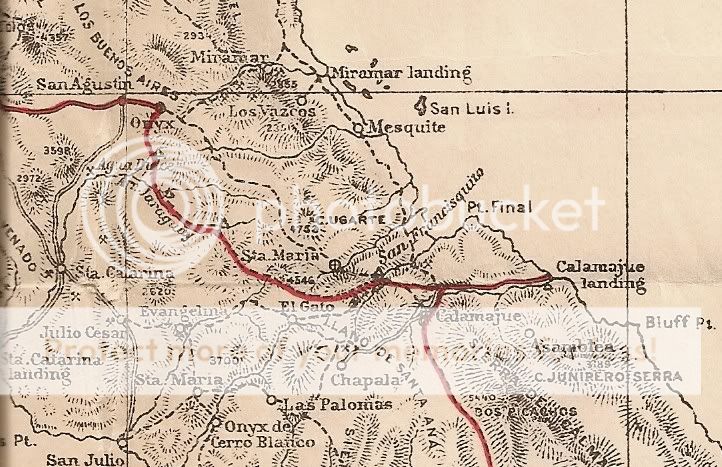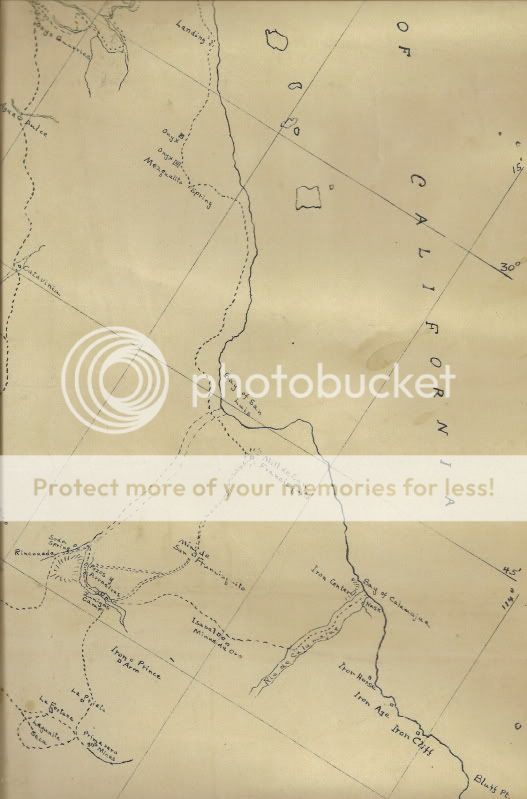
29.62480, -114.26880
I thought it was the Pioneer Mine but it might be a different one. If anyone knows the name of that mine, please post.
And then there is the gold mine opposite the Calamajue Mission site at:
29.42491, -114.19850
I don't know the name of that one but I'm sure DK does.

